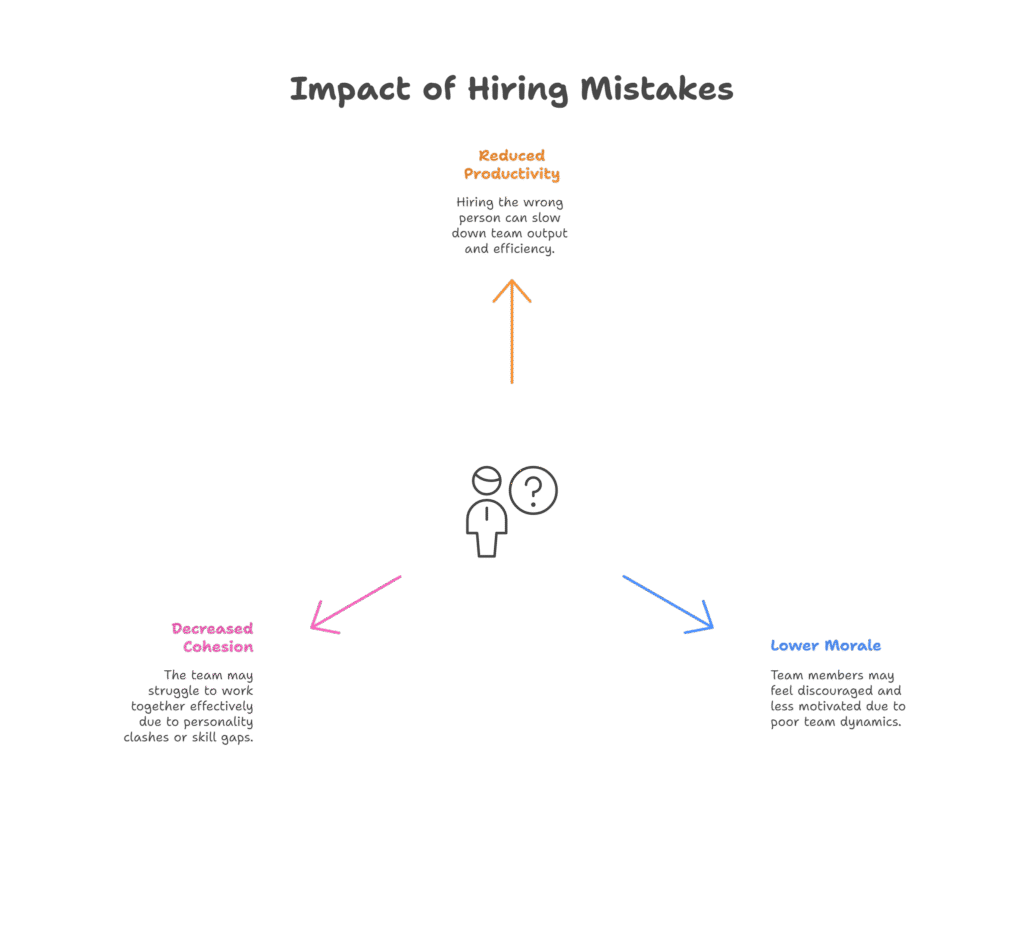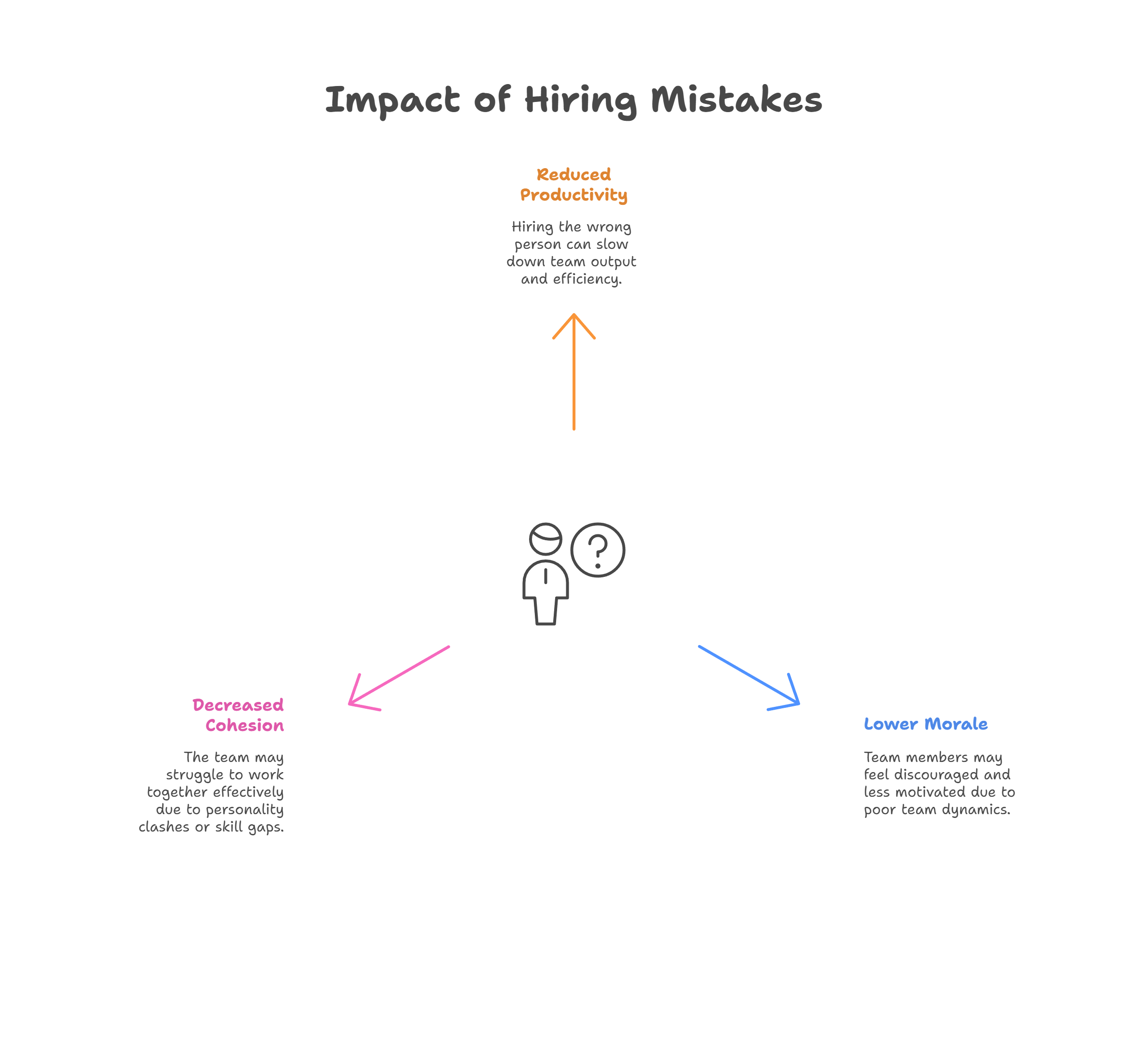
The Hidden Cost of Poor Leadership
Hiring mistakes are often chalked up to junior employees who didn’t quite fit. But when the wrong person is hired into a management role, the consequences multiply. A bad manager isn’t just ineffective—they damage productivity, morale, culture, and retention.
These are the kinds of hires that quietly unravel your business from within. And unfortunately, many companies realize this only after months—or years—of subtle fallout.
In this article, we explore just how expensive a bad manager can be, why these mistakes happen, and what you can do to stop them.
💸 Why a Bad Manager Costs More Than You Think
The financial toll of hiring a poor manager is staggering. While the U.S. Department of Labor estimates the cost of a bad hire at roughly 30% of that person’s salary, more comprehensive research shows it can reach hundreds of thousands. Factoring in lost productivity, team attrition, rehiring, onboarding, and internal repair efforts, the total damage can climb well beyond $240,000.
Supervisors often spend an enormous amount of time managing underperformance. One Robert Half study found leaders lose nearly 17% of their work week dealing with problematic employees. That’s nearly one full day per week—time better spent guiding strategy, mentoring, or building growth.
And when the manager themselves is the problem? The cost doubles. You’re losing performance and spending hours compensating for the damage.
😤 How One Manager Can Destroy Morale and Culture
Beyond hard numbers, the impact of a bad manager shows up in ways that are harder to quantify but just as damaging. Employees working under poor leadership experience unclear expectations, micromanagement, favoritism, and emotional fatigue. Over time, even your strongest team members may begin to disengage.
According to Gallup, a full 50% of employees say they’ve left a job specifically to escape their manager. That means one hire—just one—can trigger mass exits and long-term damage to morale.
What’s worse is that these kinds of toxic dynamics aren’t always loud or obvious. A manager might not yell or behave unprofessionally, but their lack of vision, communication, or fairness can slowly drain a team’s energy and unity. When trust erodes, performance follows.
📉 The Collateral Damage to Your Employer Brand
Internal culture issues often leak into the outside world. Glassdoor reviews, social media chatter, or industry whispers can paint your company as a place where leadership isn’t valued. This hits especially hard when trying to attract top talent—candidates research leadership reputations before applying.
Once your brand suffers, it doesn’t just hurt recruitment. Clients may begin to feel the strain too—whether through delayed deliverables, dropped communication, or inconsistent service. A single leadership misstep can echo through customer experience, leading to lost business or reduced loyalty.
🤔 Why Do We Keep Hiring the Wrong Leaders?
If the cost is so high, why do businesses still make this mistake?
The answer lies in two traps: promoting based on past performance, and interviewing based on gut feeling.
Many managers are promoted because they excelled in their individual role. But leading a team requires entirely different skills—coaching, communication, emotional intelligence, delegation. Without assessing those abilities, companies end up placing strong contributors into roles they’re not equipped to handle.
Compounding this is the tendency to rely on intuition during interviews. Someone who “feels like a leader” or interviews with confidence often gets the role, even if they’ve never demonstrated real leadership under pressure. This approach confuses charisma with capability—and that confusion can cost you dearly.
✅ The Smarter Way Forward: How to Avoid Bad Management Hires
Preventing bad hires isn’t about perfection. It’s about process.
The first step is moving beyond casual interviews and into structured evaluation. Instead of relying on gut instinct, define what leadership looks like at your organization. Is it about coaching? Communication? Strategic thinking? Lay out those traits and design your interview process to test for them.
Real-world leadership scenarios are invaluable. Ask candidates how they’ve handled conflict, managed feedback, or aligned teams toward a goal. Better yet, give them a scenario to walk through. You’ll learn more in 10 minutes of roleplay than in 30 minutes of talking about past jobs.
Don’t forget the power of team input. Let peers or team members meet candidates and offer insight into how the person collaborates. Leadership is relational—it needs to work on the ground, not just on paper.
Lastly, use probation periods wisely. Instead of just watching for red flags, define early-stage KPIs tied to culture, communication, and clarity. A structured review after 60–90 days can protect your team from long-term mismatches.
💼 The Real ROI of Great Managers
When you get it right, the rewards are massive. Great managers increase engagement, retain high performers, improve execution, and build teams that collaborate instead of compete. They create cultures of trust and accountability.
A good hire pays for themselves many times over—not just in results, but in the stability and health of the team they lead.
💡 Final Thoughts: It’s Not Just a Hire. It’s an Investment.
A manager isn’t just a person. They are a multiplier—or a divider. The right one lifts everyone. The wrong one drains the energy from the room.
Don’t treat leadership hiring like a coin toss. Be deliberate. Define your standards. And when in doubt—test before you trust.
✅ Or… Let Divino Business Solutions Help You Hire Right
Leadership hiring isn’t a guessing game—and you don’t have to go it alone. At Divino Business Solutions, we specialize in structured hiring frameworks that assess real leadership ability.
From role simulation to communication testing, we ensure you hire not just a manager—but a true leader who fits your team’s DNA.
Let’s help you build a team that grows stronger from the top down.
❓ Frequently Asked Questions
Q: What is the biggest cost of hiring a bad manager?
The biggest cost is often team disengagement and turnover. Even one poor leader can cause multiple employees to leave, reducing productivity and increasing rehiring expenses.
Q: How can I tell if a manager is a bad fit early on?
Look for early warning signs like communication breakdowns, lack of team alignment, increased complaints, or morale drops. Use 60- or 90-day reviews to assess leadership KPIs like trust, clarity, and delivery.
Q: Can structured hiring really prevent bad management hires?
Yes. Structured interviews, leadership simulations, and team feedback greatly reduce bias and surface real leadership capability before someone is hired.
Q: What makes a great manager in today’s workplace?
A great manager today is empathetic, communicative, adaptable, and able to coach people through complexity—not just direct traffic or enforce rules.
Q: How can Divino Business Solutions help with leadership hiring?
We use evidence-backed hiring processes, including role-based assessments and structured scorecards, to match you with leaders who actually lead—not just interview well.
Need help improving your hiring process? Contact Divino Solutions today for science-backed recruitment solutions or check out how to simplify recruitment or The Bias of Interviews: Are You Just Hiring a Smile?
📚 Citations
- Gallup – State of the American Manager
🔗 https://www.gallup.com/workplace/236441/state-american-manager.aspx - U.S. Department of Labor – Cost of a Bad Hire Estimate
🔗 https://www.dol.gov/sites/dolgov/files/OASP/evaluation/pdf/hiring_costs.pdf
(Note: Commonly referenced figure of 30% salary loss stems from this and SHRM reports) - CareerBuilder – Survey on Cost of a Bad Hire
🔗 https://press.careerbuilder.com/2017-12-07-New-CareerBuilder-Survey-Reveals-How-a-Bad-Hire-Can-Affect-Your-Business - Robert Half – Time Lost to Managing Poor Performers
🔗 https://www.roberthalf.com/blog/management-tips/managing-poor-performers-how-much-time-are-you-wasting - Glassdoor – Impact of Employer Brand on Hiring
🔗 https://b2b.glassdoor.com/resources/employer-branding-for-dummies - Harvard Business Review – Why Great Managers Are So Rare / Leadership Impact
🔗 https://hbr.org/2014/03/why-great-managers-are-so-rare
🔗 https://hbr.org/2017/06/what-great-managers-do-daily
🔗 https://hbr.org/2022/08/the-best-managers-balance-two-leadership-styles




